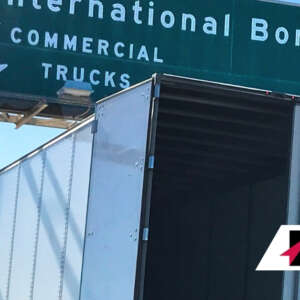Less-than-truckload (LTL) shipping is most often the most cost-effective option for moving smaller loads. As a rule of thumb, if you are shipping fewer than 10 pallets at a time, less than truckload will be the most cost-efficient method of transportation. However, there are several characteristics of LTL shipments that make them complex. In today’s market, there is far more freight than available capacity so working with your carrier will help manage your costs as well as your scheduled deliveries. Planning to use this method of shipping ahead of time can lower your supply chain shipping costs.
Here are several tips for making the most of your LTL shipment.
1. Diversify your Network. Capacity remains a challenge in the transportation marketplace. LTL carriers are productive with data, analytics, and other technology tools, which they use to re-evaluate the mix of freight they will accept to maximize their profit. Carriers are being choosy about the capacity they will accept. Working with a logistics provider can create a strategy where freight lanes match carriers’ priorities.
2. Be Flexible. Because capacity is so tight, your shipment might not go the way you had intended. Be open to trying new methods of shipping for example consolidating pickups or deliveries. Understand that a carrier’s published transit times are only a guideline and may fluctuate. Flexibility is a trait that carriers both appreciate and are willing to work with. And it may help control your shipping budget in the long run.
3. Create Value for the Carrier. Dwell time matters to carriers. The ability to get multiple freight picks and drops completed in a day is key to the carrier. Shippers that have long dwell times tend to become less of a priority for carriers. Instead, prioritize live loads and have all paperwork ready to go so the carrier can get in and out as quickly as possible. Try to formulate a pick schedule that offers fewer days for the carrier so they can maximize their capacity and yield. In turn, your freight will be a priority with competitive pricing.
4. Be Transparent with Data. Providing your carrier with the most data possible will ensure on-time pickups and deliveries. For example, LTL carriers should be informed of shipment weights and cube upfront. Any hazardous, fragile, or perishable freight needs to be detailed in advance. Accurate information will give the carriers the ability to effectively build their route plan. LTL carriers If security is a concern, a nondisclosure agreement can be signed.
5. Double-check the Details. Classify your freight so you aren’t subject to unwanted fees and delays. Underestimating the freight class can result in re-classifying fees that can be quite expensive. Double-check the paperwork so that it is complete and accurate, which will save your company money.
6. Configure Your Freight. Review how you package and palletize your freight. This affects the class, cube, and density. Choose the best pallet for your shipment to cut costs and ensure that you have prepared and packed the freight with the highest standards. This diminishes the chance for damage during transit, which can increase costs. Tip: If the freight is irregular in shape, heavy, or cannot be boxed, FTL is likely a better choice.
7. Choose the Right Carrier. There are many carriers to choose from, but not every carrier is a good fit for your type of shipment. The lowest cost might not always be the best choice. There are other ways to save money besides always choosing the lost cost provider and sacrificing service. Carriers that already run the routes that you are looking for are a better way to control shipping costs.
8. Understand Your Freight Mix. Shippers need to optimize their freight loads to match market conditions. There might be other ways to ship freight that decreases costs without sacrificing service. A logistics provider can provide information on carriers and options to control costs.
Working with a transportation expert like Red Arrow Logistics can provide insights as to how you can come up with supply chain strategies to ensure the best costs and service.
Your Trusted Partner
At Red Arrow Logistics, we provide expertise and white-glove customer service with fast-growing, complex, and high-value supply chains. As the next-generation model of logistics companies, we offer tailored transportation and logistics solutions — from single shipments to complex over-dimensional and international orders.
Red Arrow offers the scale and scope of services including air, ocean, and ground transportation to meet the budget and schedule requirements of the largest and smallest companies alike. If we can be of assistance, please email us at info@redarrowlogistics.com or give us a call at 425-747-7914.





